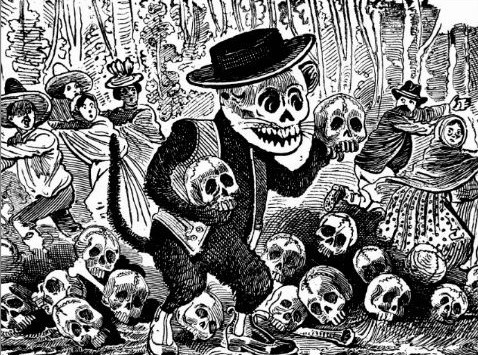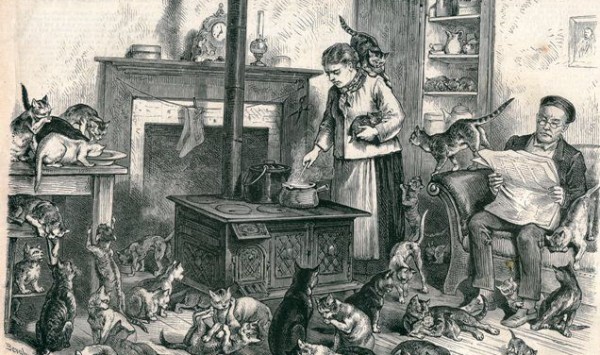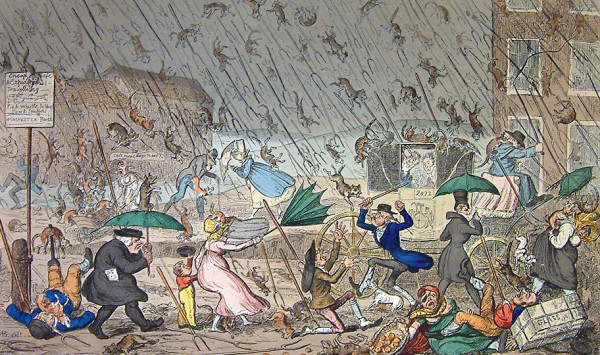THE CAT MAN OF GWINNET STREET (1896)

******************************************************************************************************************************** Brownstone Detectives investigates the history of our clients’ homes. The story you are about to read was composed from research conducted in the course of one of those investigations. Do you know the history of YOUR house? ******************************************************************************************************************************** Haasen-pfeffer is a German dish best served hot. A traditional German rabbit stew, it was brought over to the US by immigrants. (Hase is German for “hare,” and pfeffer is German for “black pepper.”) Although rabbits are the chief ingredient in the old-world dish, German immigrants in the early days of the country would often substitute squirrels. But never cats. Until Herman Fritsch appeared on the scene in Williamsburg in 1896. THE CAT MAN OF GWINNET STREET The locals were first alerted to the possible rabbit substitute in their stews when several neighbors heard a terrible racket occurring one night at Fritsch’s home, 168 Gwinnett Street (now Lorimer Street). As the neighbors listened, they began to hear a horrible howling coming from his rooms above a liquor store. They thought the cries sounded like “the screams of a child or woman in distress.” A consultation amongst several of the neighbors quickly took place, after which they decided that “murder was surely being committed in Fritsch’s apartments.” So Officer Lang of the Clymer Street Station was called for. While the neighbors waited, though, there was a last despairing shriek. And then all was still. OFFICER LANG ON THE JOB By the time Officer Lang arrived, “not a sound was heard” within the […]
THE CAT LADY OF BUSHWICK (1915)

******************************************************************************************************************************** Brownstone Detectives investigates the history of our clients’ homes. The story you are about to read was composed from research conducted in the course of one of those investigations. Do you know the history of YOUR house? ******************************************************************************************************************************** There is an old wives’ tale which tells us that cats steal the breath of humans. They lie in wait until the human is deeply asleep before climbing upon the victim’s chest, leaning down closely to the mouth, and then slowly sucking the air out from the lungs of their victim. When the next morning, a dead body is discovered, no visible suspects are to be found. On a morning in January of 1915, at 1355 Dekalb Avenue, a night watchman by the name of William Heuermann, was returning home after a night’s work. Upon opening his bedroom door, and discovering his dead wife – he found plenty of suspects – 47 to be exact. THE CAT LADY OF DEKALB Angelina Heuermann was crazy about cats. Some would say that she was just plain crazy. She was always “collecting them off the streets,” her fondness for the felines “frequently causing them to be dispossessed from houses where the presence of weird animals was undesirable.” The neighbors knew about her quirk, but they chalked it up back then to an oddity rather than a sickness. The number of cats that lived in and about the house, though, had grown suspiciously large of late, causing the neighbors to gossip amongst themselves regarding what […]
IT’S RAINING CATS! HALLELUJAH! (1887)

******************************************************************************************************************************** Brownstone Detectives investigates the history of our clients’ homes. The story you are about to read was composed from research conducted in the course of one of those investigations. Do you know the history of YOUR house? ******************************************************************************************************************************** It once rained cats on Grand Street. The felines were tossed and dropped rather dramatically from the rafters of a playhouse in Williamsburgh. When the Society For the Prevention of Cruelties to Animals got wind of the act, they decided to buy a ticket to the show, “Soap Bubble”… IT’S RAINING CATS…HALLELUJAH! In Williamsburg, in the late 1800s, there existed a show hall which sat in the middle of Grand Street between Bedford and Driggs avenues at No. 166. Known for a time as the Grand Street Museum, it had a run of only five years between 1885 and 1889. But the Museum made the papers in 1887, for a cruel cat storm that played out upon their boards… In the latter part of 1887, a show by the name of “Soap Bubble,” was making its debut in the district. Although it wasn’t creating much of a stir, it so happened that a letter about the show was received at the offices of the Society for the Prevention of Cruelty to Animals. The letter made a serious accusation, referring to “cruelty to cats” that was being “exhibited nightly” during the play. The writer, who noted he’d spent an evening at the theatre, stated that during the first act a “large number […]